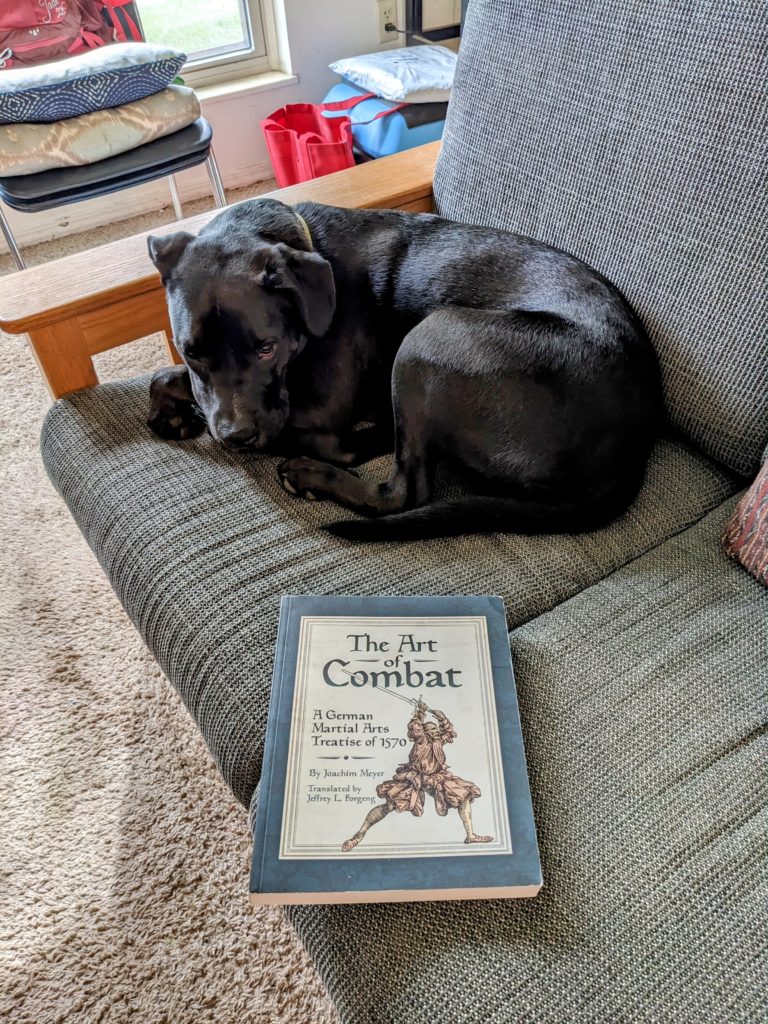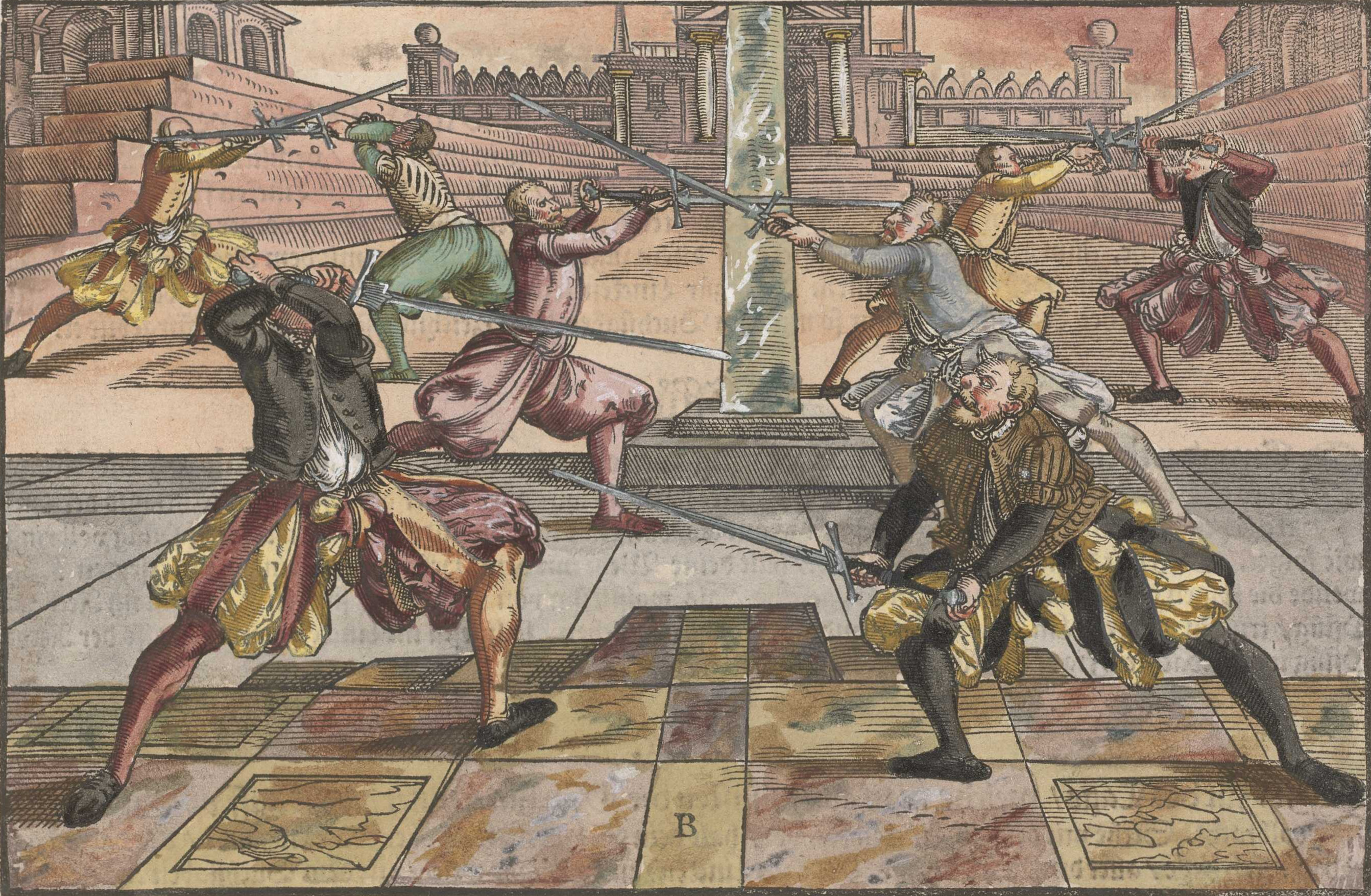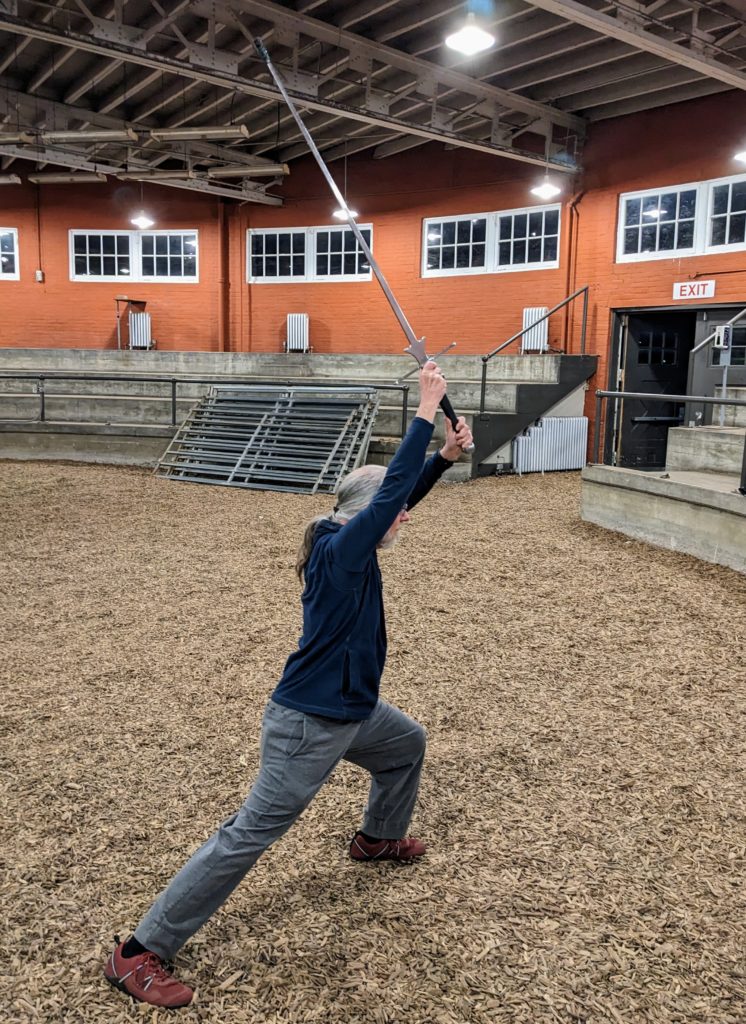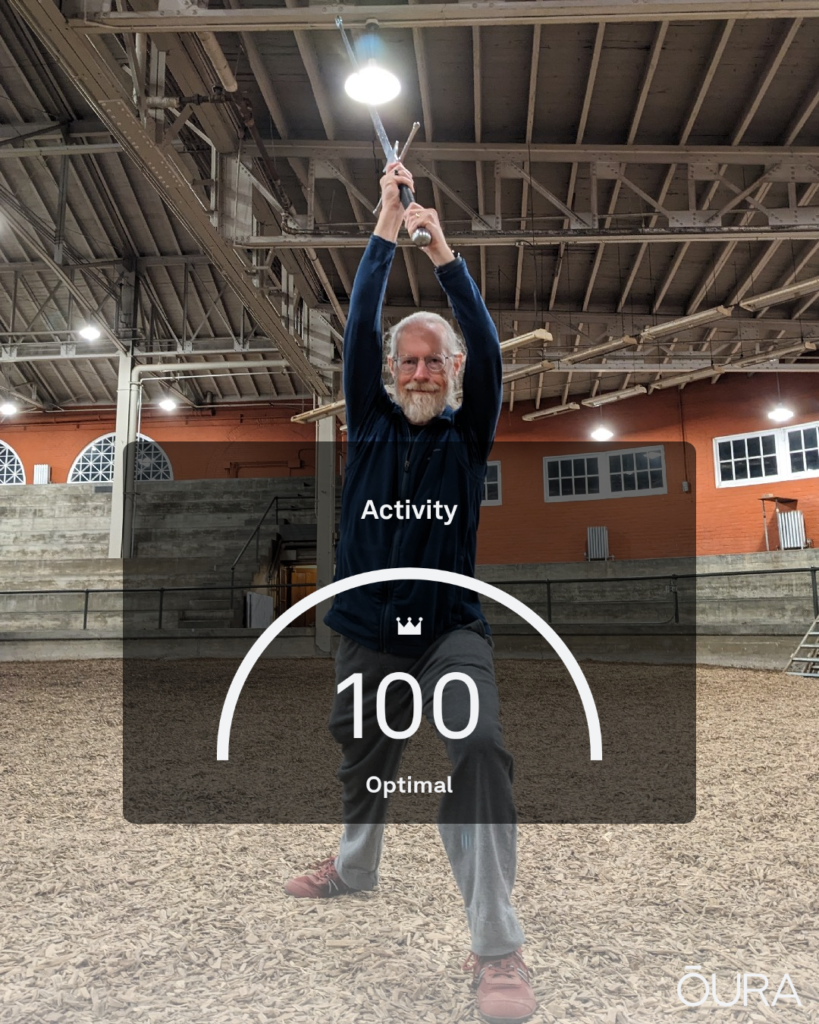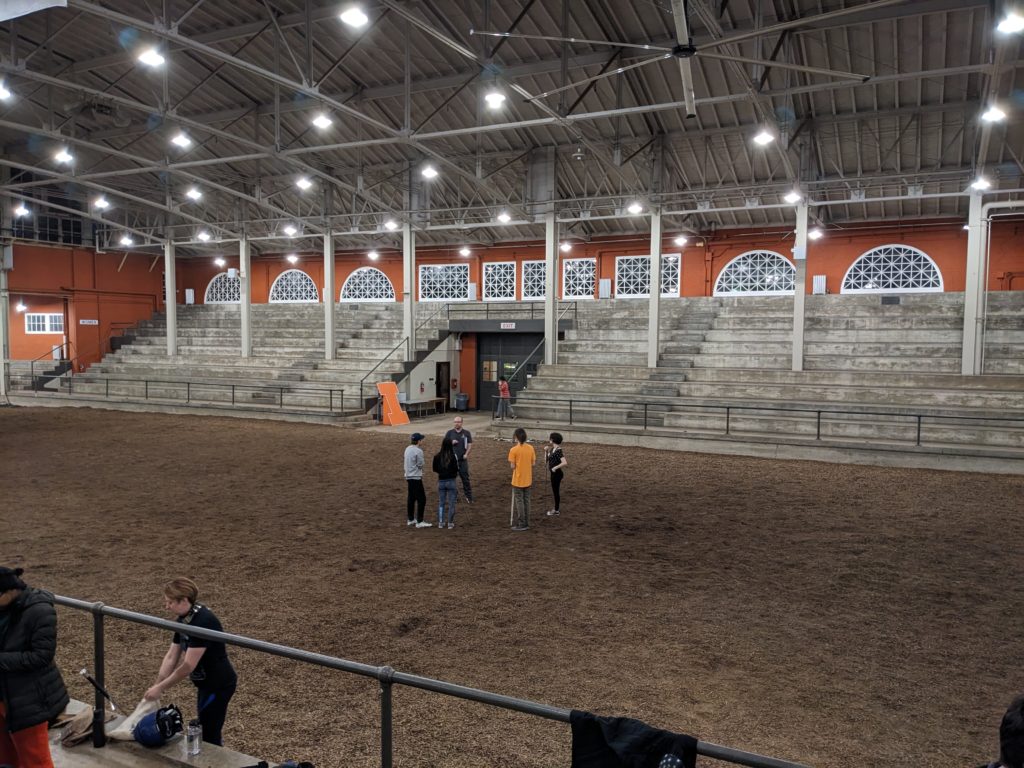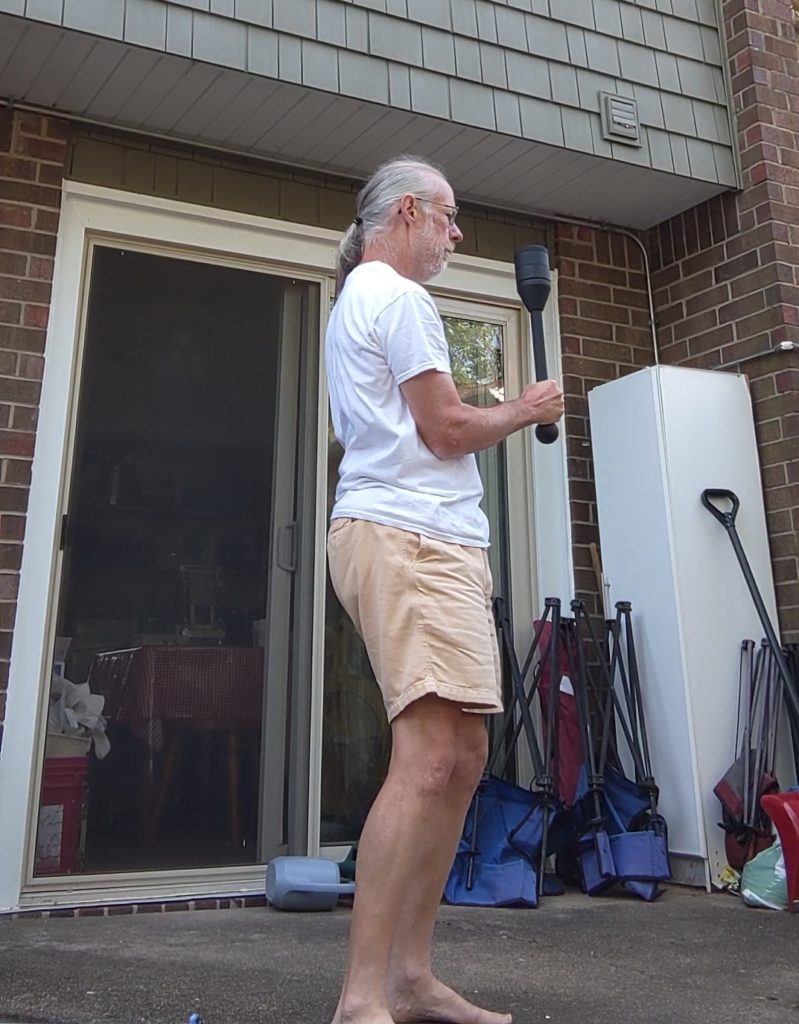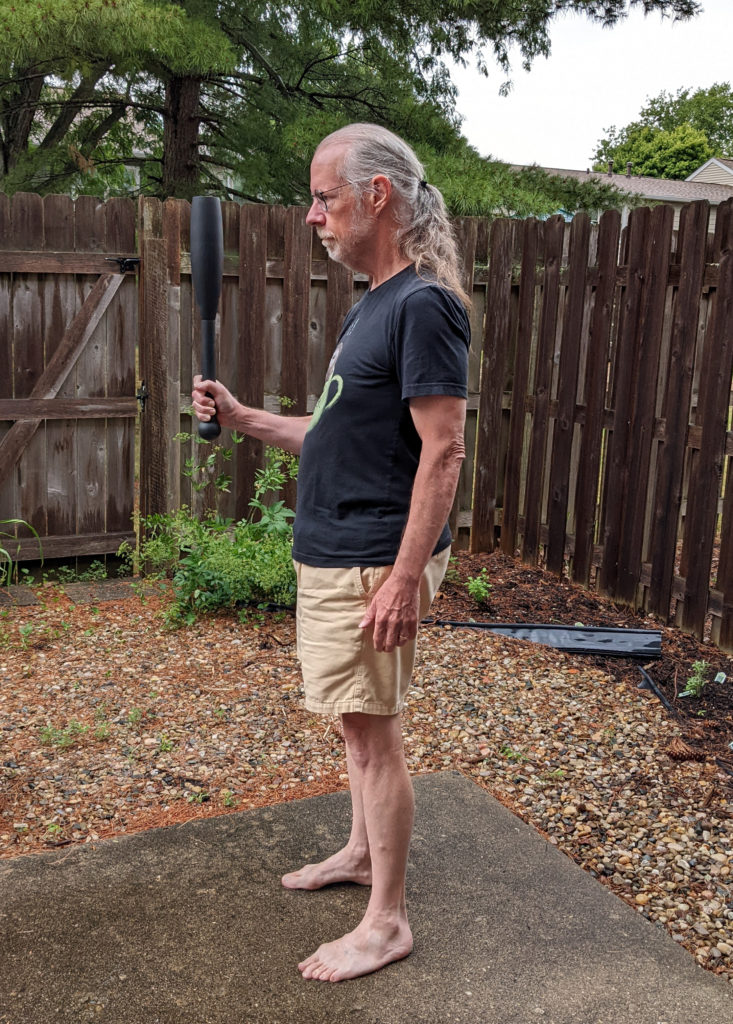I’ve long known I’m no good at paying attention to more than one thing at a time. Because of that, I try pretty hard to avoid even trying to multitask. Still, even having accepted that I’m crappy at this sort of thing, I’m a little frustrated at how it’s showing up in my longsword practice.
Generally I think I’m okay if I try to just do one thing. For example, I’d assume I could execute a single cut or a single parry. But, no. In fact, I can only do a piece of a cut or parry—because one of the things Meyer says is “Every cut gets its step.” So I’m not doing it right unless I do the sword action and the stepping action.
It’s not actually quite as bad as I’m making it sound. I can move into any of the guards. I can swing my sword in any of the principle cuts. I can step with proper form. I can even swing my sword and step forward. But as soon as I try to, let’s say, step to the side and swing my sword, my form tends to break down.
Longsword is called “longsword,” not because the sword is long, but rather because nearly all the cuts and parries are executed with the arms extended. (And this is actually crucial to being successful. If you have your arms extended and your body in the right position, you can parry any cut. Try that with your elbows bent, and you’re very likely to get hit with a sword.)
I can hold the sword in good structure, with my arms straight. I can execute a cut with it, with my arms straight. I can even execute a cut and step forward, with my arms straight. But when I try to do any specific cut with any specific footwork, my form starts to break down: I tend to pull my arms in. And if I focus on keeping my arms extended, I forget to take the step.
It’s very frustrating.
Fortunately, having learned taiji, I know the solution to this: Practice.
That is, proper “deliberate practice” à la K. Anders Ericsson, where you: perform an action, monitor your performance, evaluate your success, try to figure out how to do it better, and then repeat.
If I can only pay attention to one thing at a time, I need to break these sword moves down further. I need to practice keeping my arms straight during a cut, and then repeat that move (paying attention) over and over again, until I can do it without paying attention. Then I can add in the stepping, and practice cutting with a step over and over again until I can do both of those things without paying attention. Then I can start working on a longer phrase: cut while stepping, next cut while stepping. And so on.
I haven’t started practicing outside of class much yet. There are only certain things that can be done without a partner, but those things—stance, guards, footwork—are exactly what I need to practice.
And we will still be meeting over the summer, so I’ll have plenty of opportunity to practice the other things as well.
It’s time to make a plan.

